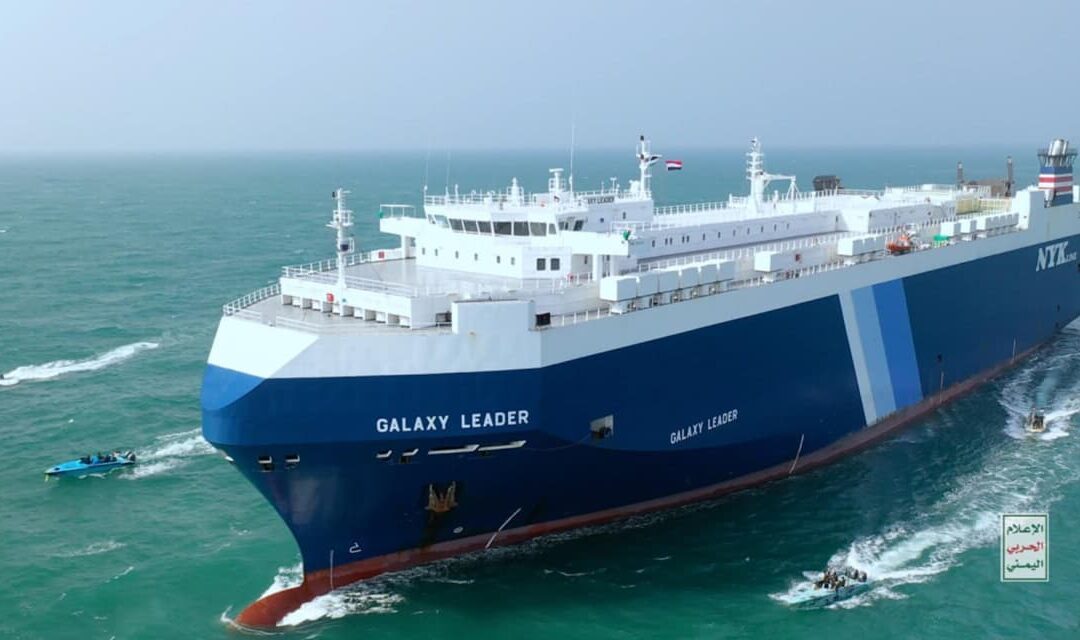The Houthi attacks on cargo ships in the Red Sea and the drought afflicting the Panama Canal have created a “perfect storm” of disruption in global shipping, according to Mike Giambrone, an account executive at logistics provider OEC Group New York.
This week, the United States and partner nations including Australia, Canada, and the United Kingdom warned the Houthi rebel group against further attacks on Red Sea shipping. The Shia political group, which controls much of Yemen, has targeted cargo ships with a host of weaponry in recent months, including the first use of anti-ship ballistic missiles against such vessels. A sea drone attack was launched from Yemen just hours after the countries’ warning to the rebel group.
The Red Sea is a critical shipping lane for cargo traveling through the Suez Canal, which accounts for about 12% of global trade, according to Giambrone. Approximately 30% of global container traffic traverses the Suez Canal, transporting $1 trillion of goods per annum, the government of New Zealand reported in 2021.
On the other side of the world, drought conditions in the Panama Canal, worsened by a severe El Nino, have severely impacted container ship traffic through another key trade route. October 2023 marked the driest October on record for the Canal watershed, according to the Panama Canal Authority, and officials have cut the number of transits through the critical shipping artery. The Panama Canal accounts for about 7% of global seaborne trade, according to the Wall Street Journal.
Related: Houthi attacks on ships in the Red Sea could hit Next’s sales, clothes seller’s CEO warns
“To have both of these situations happening right now has created something of a perfect storm,” Giambrone told MarketWatch.
U.S. retailers, he said, could feel the impact across a host of product categories, encompassing home goods, clothing, furniture, and even back-to-school supplies. “I know it seems early, but that will all be planned out well in advance to meet [retailers’] deadlines,” he said. “Everything comes on those ships.”
Set against this backdrop, supply chain impact issues could be in the spotlight when retail giants such as Target Corp.
TGT,
and Walmart Inc.
WMT,
make their next quarterly reports, according to Giambrone. Walmart reports fiscal fourth-quarter results before market open on Feb. 20.
This week British clothes seller Next PLC
NXT,
warned that Houthi attacks in the Red Sea could disrupt the company’s supply chains and delay U.K. deliveries by up to two and a half weeks.
Related: Houthis launch sea drone to attack ships in Red Sea, hours after U.S. issues ‘final warning’
“Difficulties with access to the Suez Canal, if they continue, are likely to cause some delays to stock deliveries in the early part of the year,” the company said, in a trading update Thursday.
The Houthi attacks in the Red Sea also prompted shipping giant Maersk
MAERSK.A,
MAERSK.B,
to pause its transits through the shipping artery and the adjoining Gulf of Aden. On Friday Maersk said that it is diverting its ships away from the Red Sea.
“The situation is constantly evolving and remains highly volatile, and all available intelligence at hand confirms that the security risk continues to be at a significantly elevated level,” the company said, in a statement. “We have therefore decided that all Maersk vessels due to transit the Red Sea / Gulf of Aden will be diverted south around the Cape of Good Hope for the foreseeable future.”
“We understand the potential impact this will have on your logistics operations, but please rest assured that all decisions have been carefully considered and ultimately prioritise the safety of our vessels, seafarers and your cargo,” the company added.
Related: Why Red Sea chaos is driving oil buyers ‘into the arms of U.S. shale producers’
However, the route around southern Africa and the Cape of Good Hope is longer than going through the Suez Canal via the Red Sea.
“The Red Sea is a vital artery for global trade which is currently blocked,” said Christian Roeloffs, CEO of Container xChange, an online container trading and leasing platform, in a Thursday statement. “Thankfully, there are ways to circumvent that artery and keep the global trade moving and therefore, the trade is not stopped.”
“Therefore, the RedSea situation is acute but not chronic in the long term for the shipping industry,” Roeloffs added.
Nonetheless, the longer journey could impact U.S. supply chains, according to Giambrone. “Going round the Cape of Good Hope, on paper, they say it adds 10 days, but realistically, I think it adds more than that, especially if the ship had already started making their way through the Red Sea.”
Related: Oil heads for weekly gain, buoyed by Middle East tensions
“It’s really the East Coast and Gulf Coast markets that are going to see the results of this,” he added, noting that when there’s a problem on the East Coast, shippers can transfer their capacity to the West Coast. This, however, can bring additional problems, with Giambrone pointing to the post-COVID shipping surge that resulted in “a parking lot of container ships” at West Coast ports in 2021. To ease the congestion, some ships were diverted to the East Coast. “Then the East Coast started having serious congestion,” the logistics expert told MarketWatch.
The disruption of the COVID era marked something of a watershed for logistics, according to Giambrone. “It, all of a sudden, showed people how important it is to have a good logistics system in place,” he said.
Louis Goss contributed.








